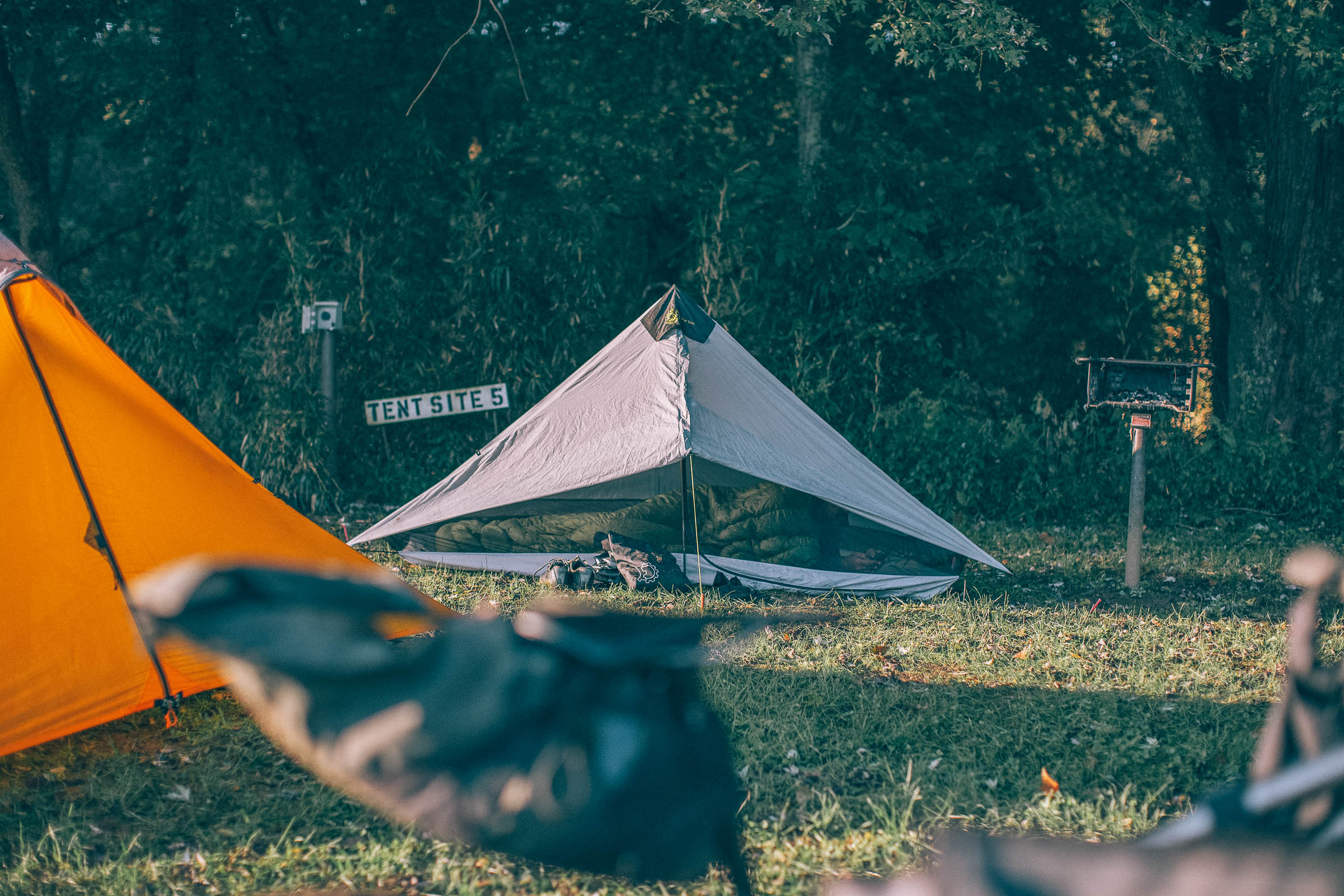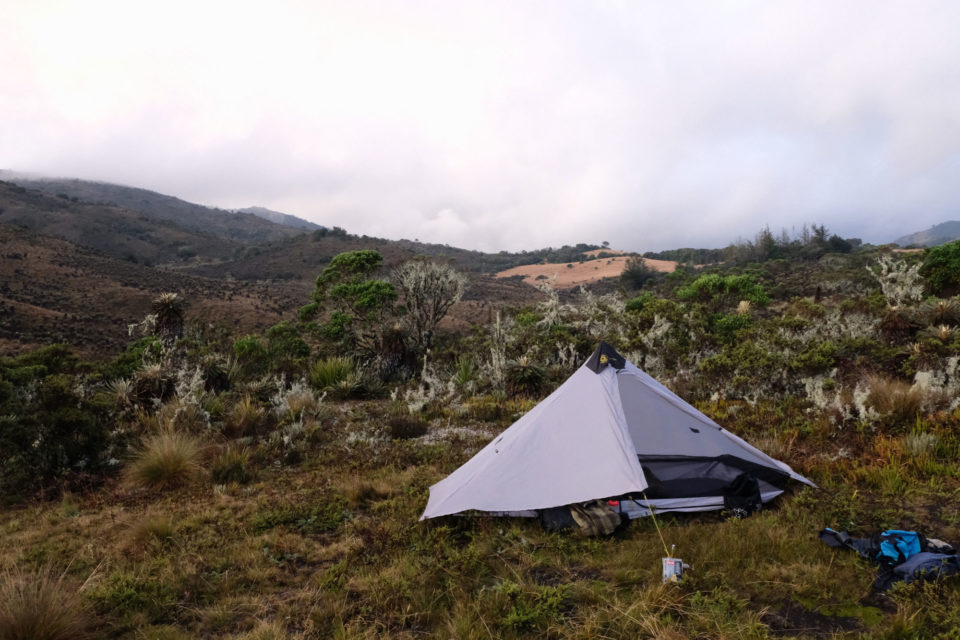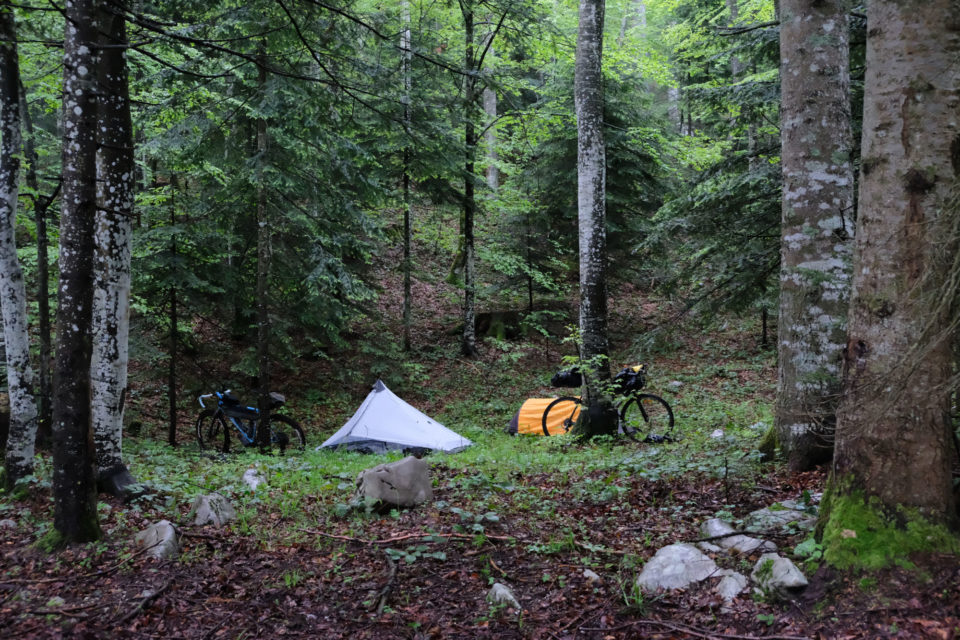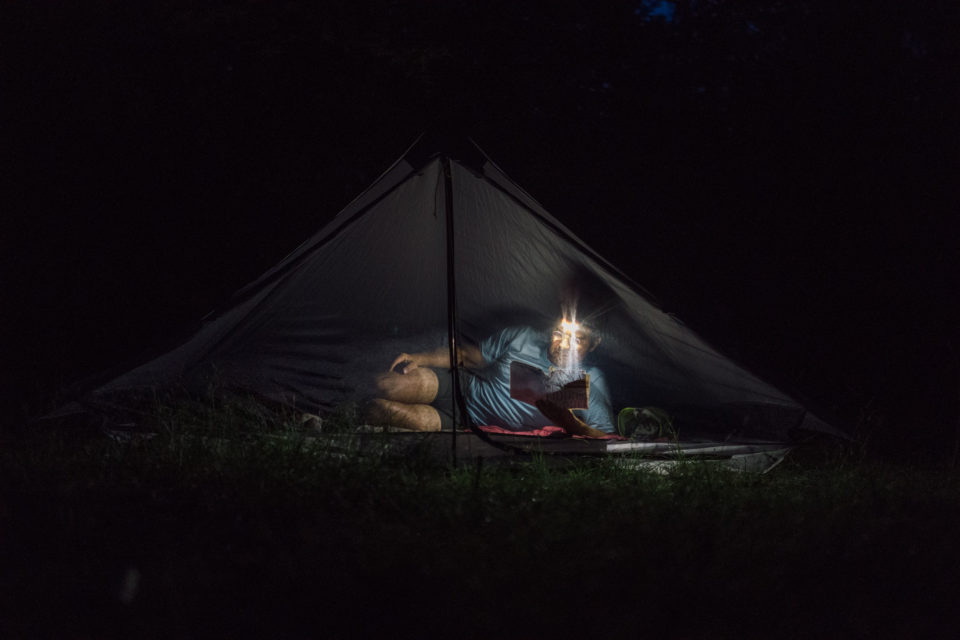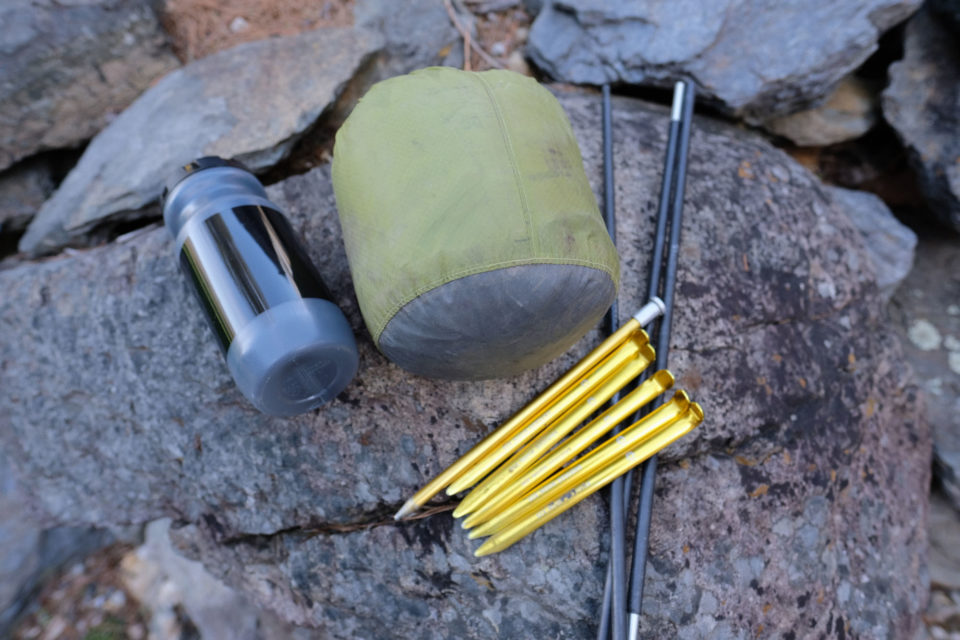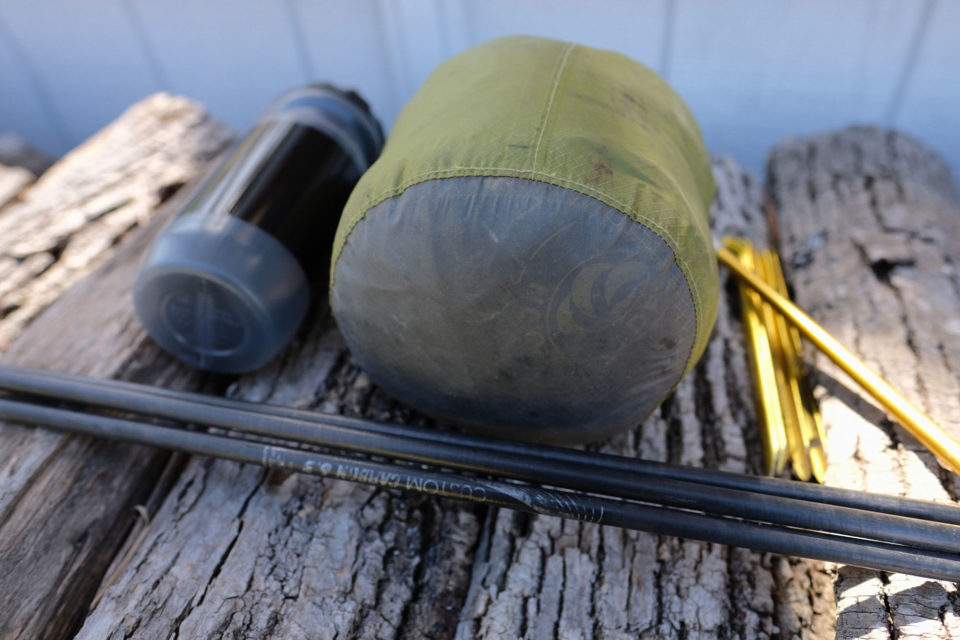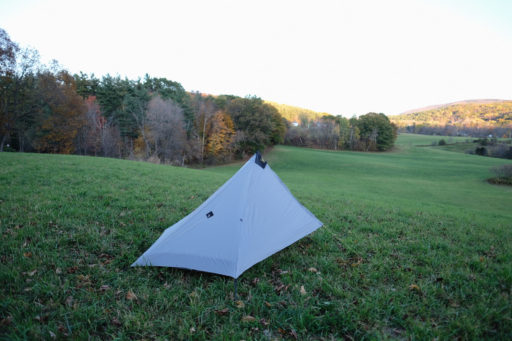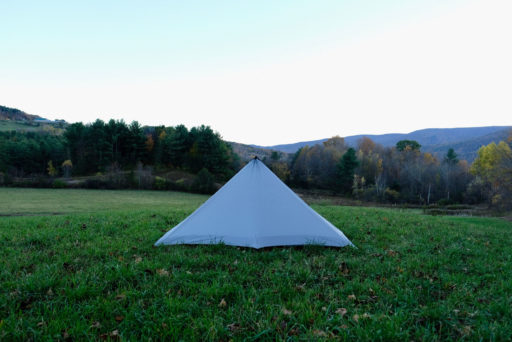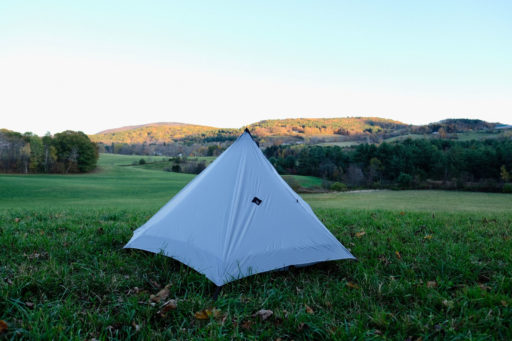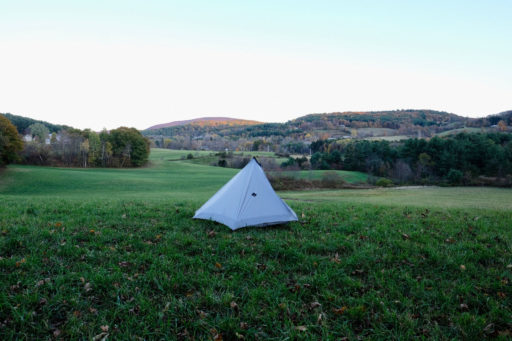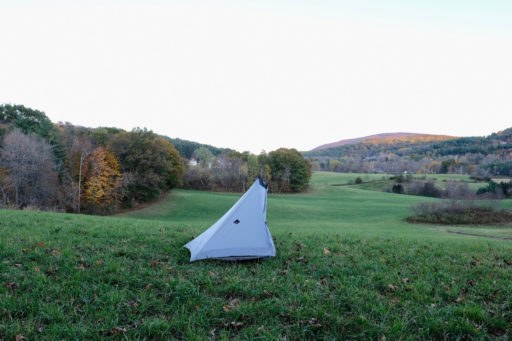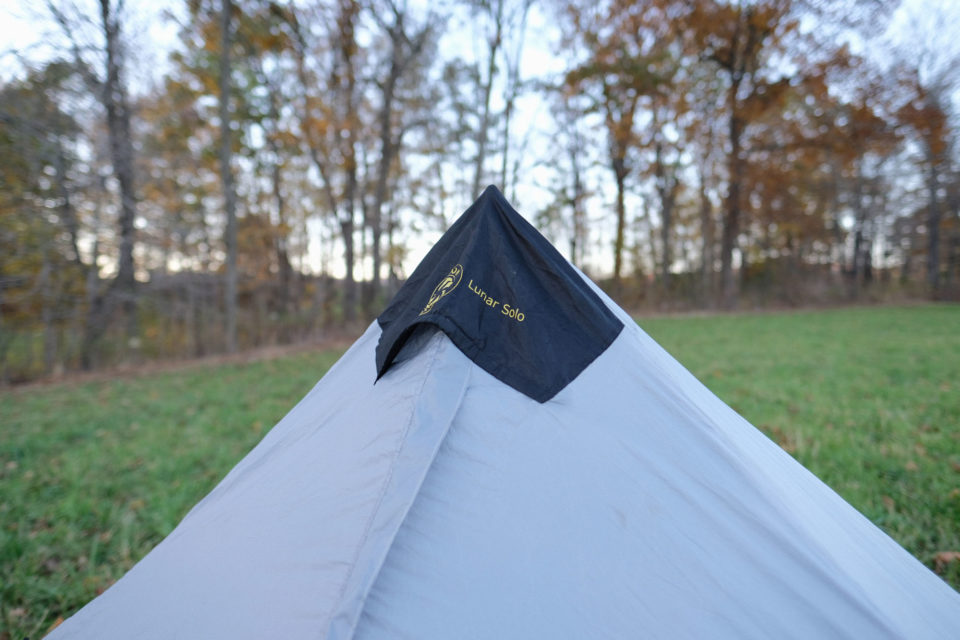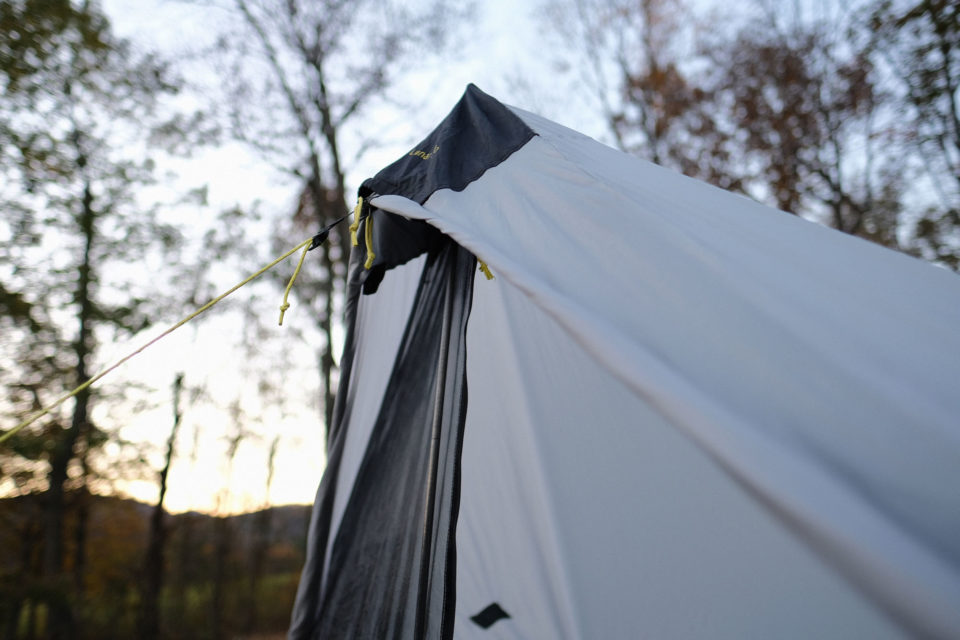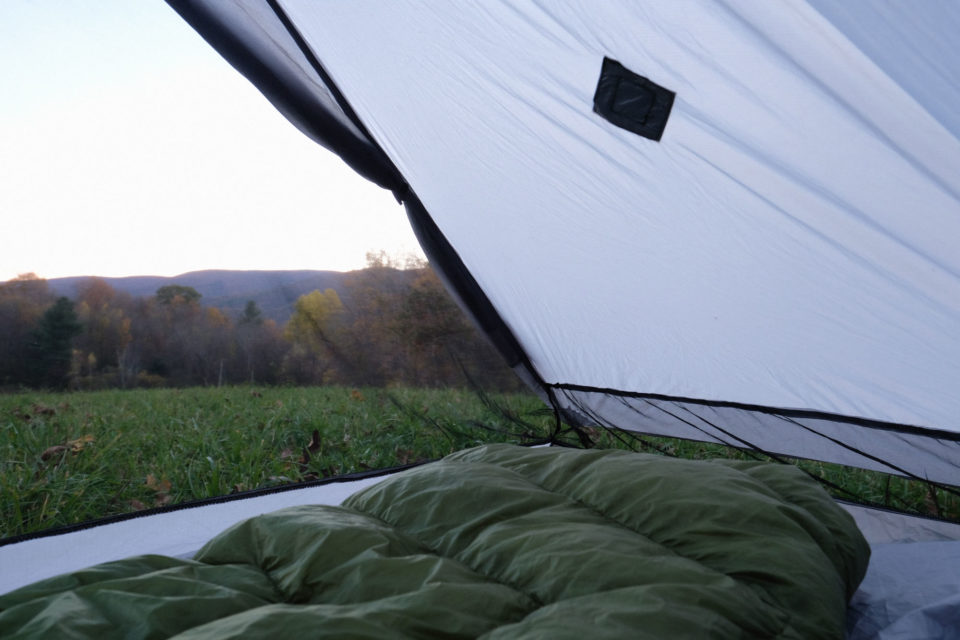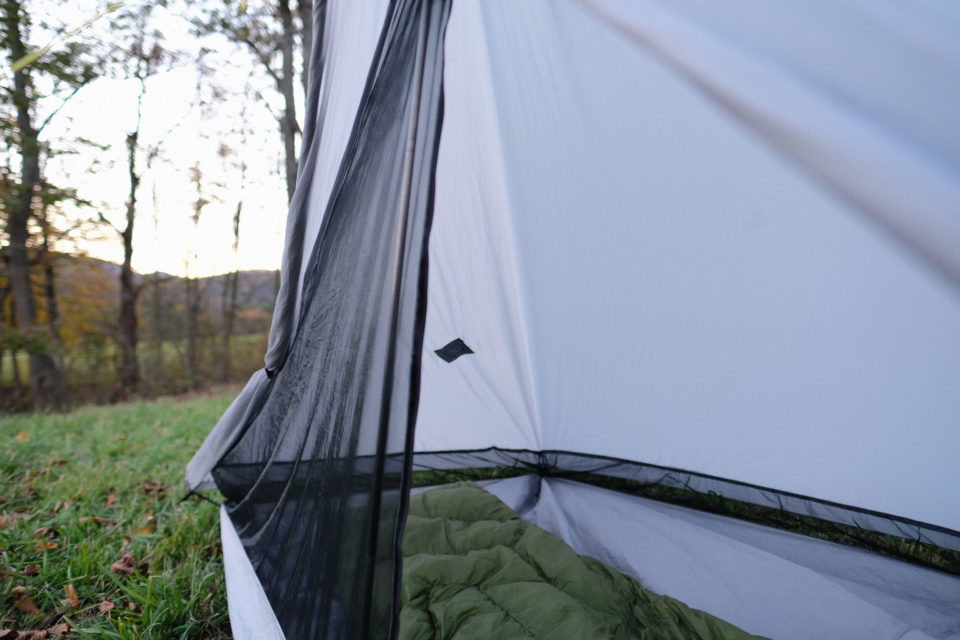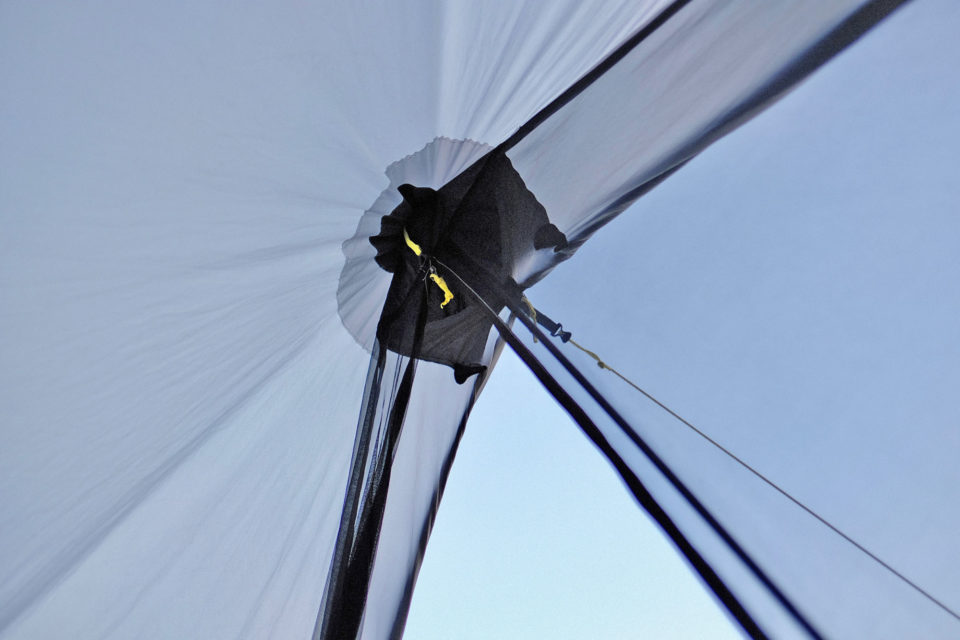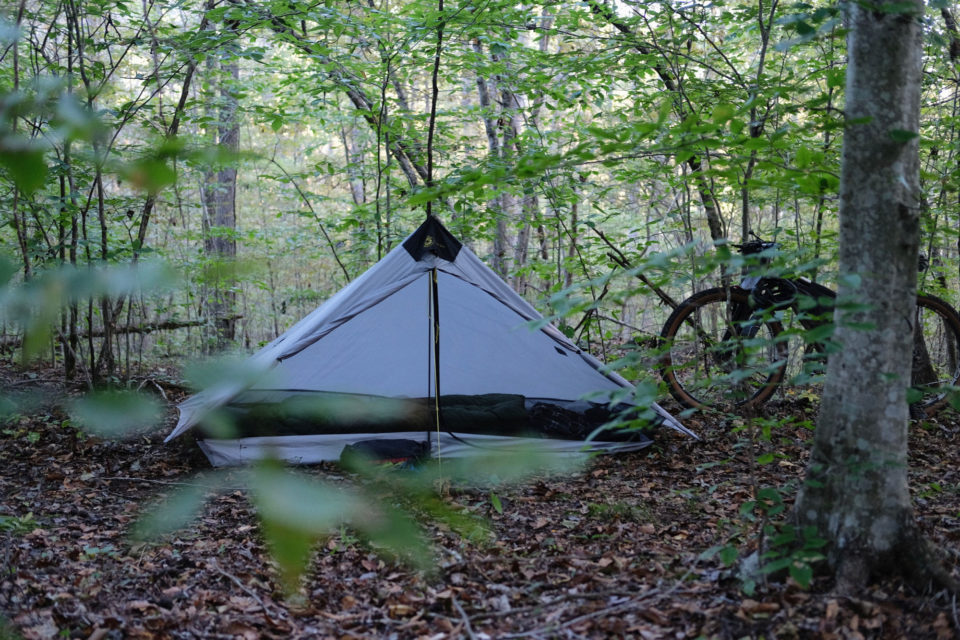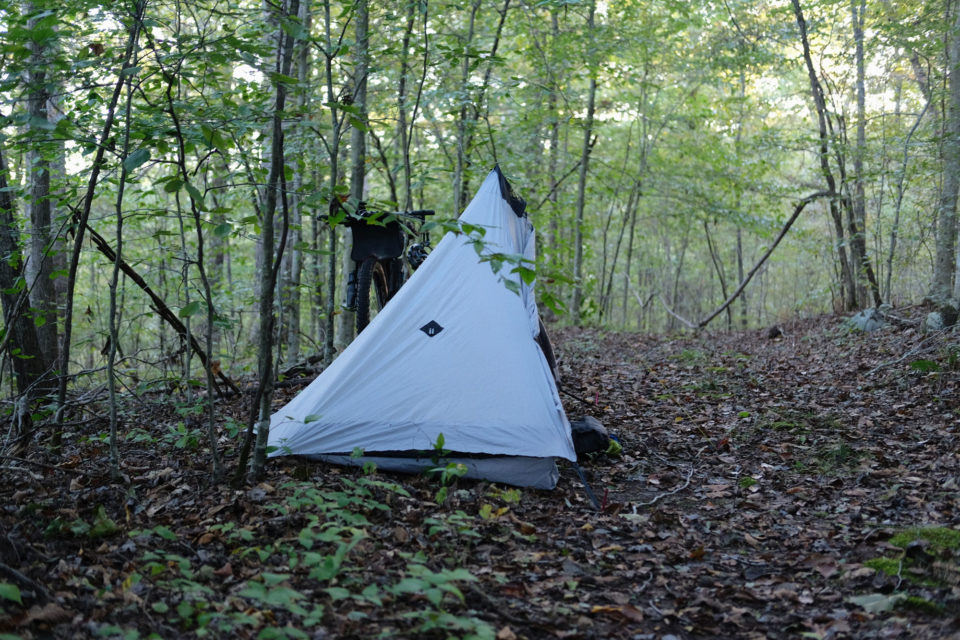Six Moon Designs Lunar Solo Review
The Six Moon Designs Lunar Solo has won numerous awards since its introduction, and the feature spec makes it plenty appealing for bikepacking. Joe has been testing it on three continents for nearly a year, and has spent upwards of 75 nights in it. Read on to see how it has fared.
PUBLISHED May 14, 2020
If I were headed out on a trip tomorrow—alas, I’m not!—the Six Moon Designs Lunar Solo is the tent I would throw in the duffel. I’ll share details below, but it’s easy to summarize why. I love the compact pack size, abundant living space, usable vestibule, and most-of-the-time great performance. The times it’s not a great performer are equally clear: interior wall condensation is an issue and, since it’s not freestanding, it needs suitable ground—and comparatively a lot of it—to stake properly. This makes the balance sheet of compromises with this tent pretty legible. If you fall on the same side of it that I do, the Lunar Solo is very hard to beat.
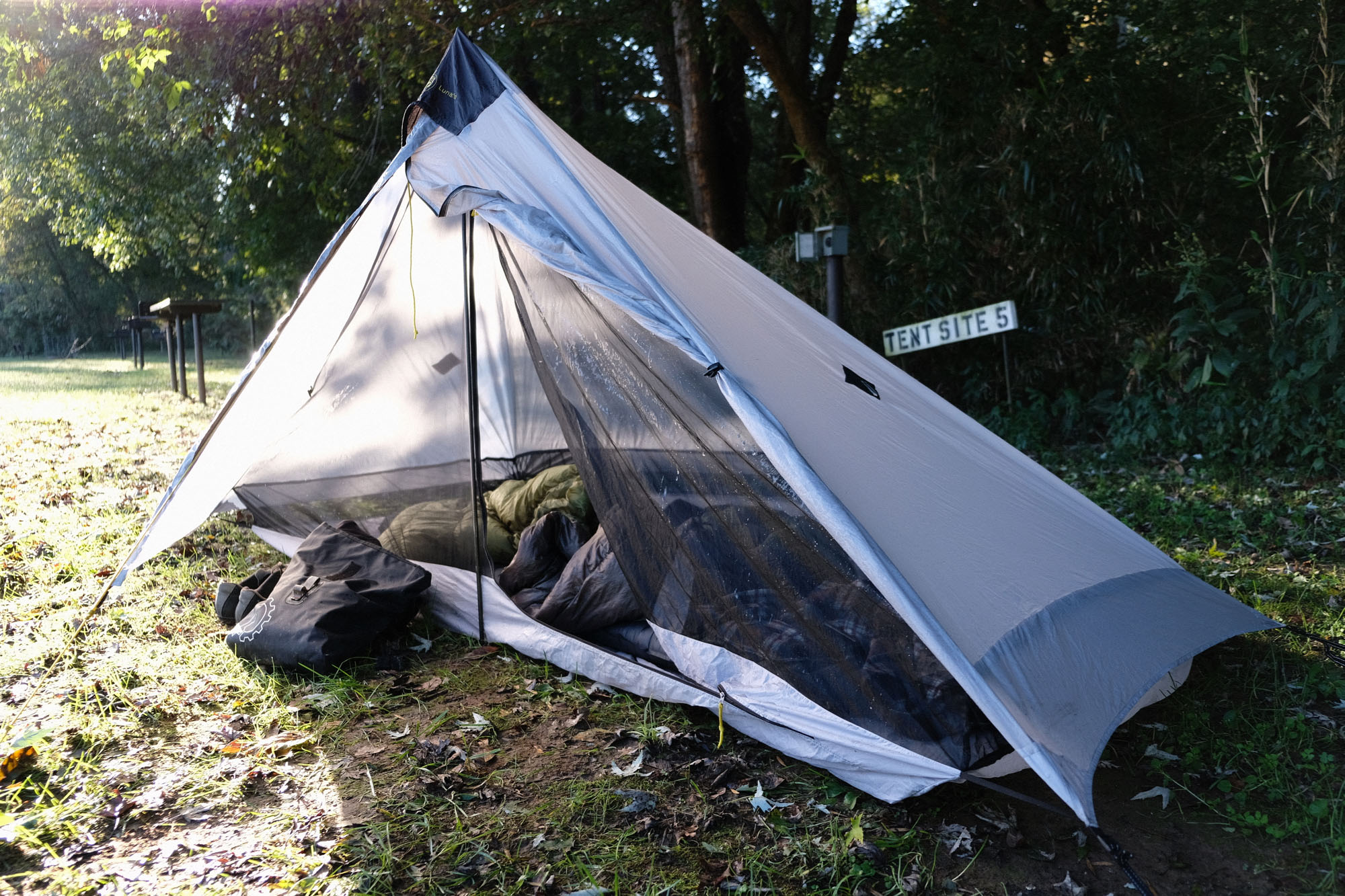
Let’s get the on-paper details out of the way. The Lunar Solo is a single-wall, silpoly, non-freestanding, pyramid-type tent with a sewn-in netting and floor. It boasts 26 square feet (2.4 square meters) of sleeping area and 8.5 square feet (.8 square meters) of vestibule area. The center peak height is 49”/1.2m, achieved with a hiking pole or, as is relevant in the bikepacking context, a single 49”/124.5cm segmented pole. I used Six Moon’s three segment carbon pole—sold for an extra US$35—where each segment is 17.5”/44.5cm and it fit easily into a medium sized Revelate Tangle frame bag. They also sell a five segment pole.
The tent bathtub floor—which is a heavier weight fabric than the walls—is 6”/15cm deep and then there is 6”/15cm of mesh above the floor for ventilation. The tent canopy extends well over the mesh area to prevent rain or splash from getting in. Single entry is through a zipper that opens half of the side mesh area. Listed weight is 26oz./740g not counting the pole or six stakes. If you don’t have any, the stake set costs US$13, and the seam seal service if you don’t care to do it yourself is an extra US$30.
Those numbers and features tick many of my boxes for a bikepacking tent, and I wasn’t disappointed with its performance in the field.
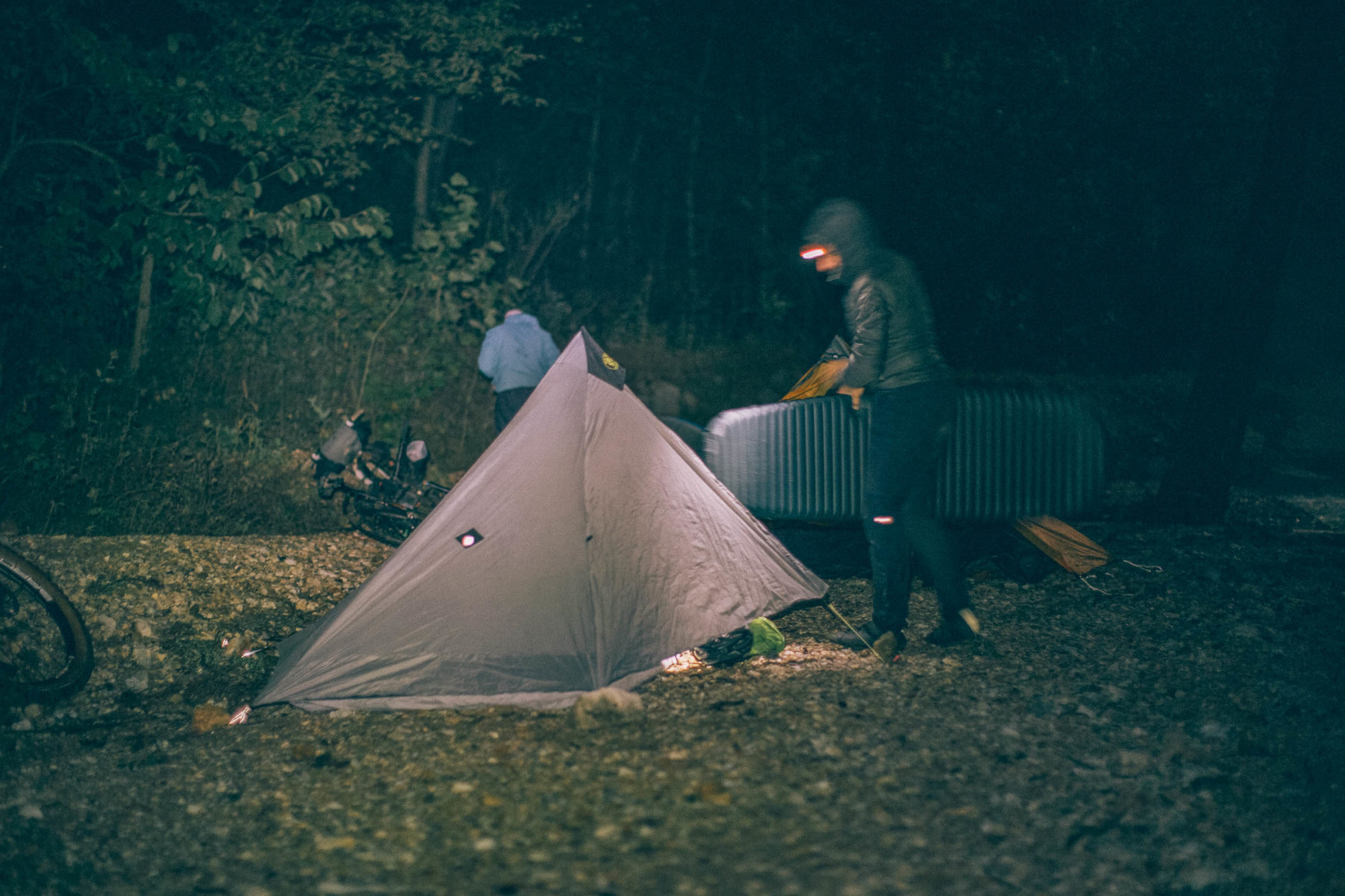
In Practice
I’ve shown my cards numerous times in my reviews. To me, compactness is more important than weight. With space at a premium in bikepacking bags, I want my gear to squash down into the smallest possible volume, even if there are lighter weight alternatives. The Lunar Solo readily conforms to my tent rule, namely that, when packed, it’s about the size of a canteloup. That’s why I shy away from dyneema tents (as if their stratospheric cost wasn’t enough). Dyneema does best in terms of longevity and fabric wear when it’s somewhat loosely rolled rather than aggressively mashed into stuff sacks the way I prefer. I haven’t babied the Lunar Solo’s silpoly fabric in the slightest, and I’m hard pressed after a year to find any concerning wear. And—let’s keep things in perspective—the Lunar Solo falls within any reasonable definition of light. It’s true that dyneema doesn’t absorb water and doesn’t stretch as much as silpoly. When you pack the Lunar Solo wet, it’s a heavier little bundle. And the tension adjusters come into play for dealing with stretching as conditions unfold while it’s pitched. Those things might matter to you. One can also plunge into the vortex of the debate over silpoly, i.e., silicone coated polyester, which the Lunar Solo is, versus silnylon. I have no reason to doubt claims that silnylon is stronger at the same weight than silpoly, but, again, the Lunar Solo has shown itself robust enough for heavy use.
For all its compactness when packed, the pitched Lunar Solo is spacious and easy to move around inside. It’s a hexagon, but an irregular elongated one. Sitting up is no problem, nor would it be for someone a fair bit taller than I am. I can readily bring in and spread out all my clean gear.
Getting in and out is straightforward, and the center pole doesn’t get in the way. The half of the triangular front mesh that zips open can be secured with an elastic loop as can the mesh itself. Once inside, ample maneuvering room allows reaching the front tent wall while sitting up. The way it works is loops near the end of the zipper slide with a prusik knot along the main front guyline that holds the center pole up. This creates the covered space and shields the interior of the tent. The adjustability is both elegant and convenient, and I end up sliding what amounts to a weather awning up and down as frequently as conditions demand. One peeve is that the hook on the line is tiny, so it is hard to catch the two equally small loops on the vestibule halves. It’s flat out impossible with gloves.
The vestibule is comparatively massive for a solo tent, even if the front edge of it by design doesn’t extend all the way to the ground. If you’ve pitched so that a serious wind is coming from the front and the rain is heavy, gear in the vestibule is likely to get sprinkled on. The opening is no doubt there to ensure at least minimal ventilation and, of course, you shouldn’t be pitching into the wind. But that is sometimes unavoidable and wind direction can change.
Stepping back from the design details of this tent, I can say that I’ve been happier and more at ease in it than I am in less spacious ones. That’s predictable and obvious, of course, but the subjective sensation of it is very welcome. On the gear front, a lot of the psychology of bikepacking is the low-key puzzle solving of fitting a piece of gear here and tucking in some food there. I’m all for the soft bag format and appreciate how the bike rides and the reliability of the setup. But it’s nice to relax away from all that at the end of the day and not feel the potentially claustrophobic expression of minimalism at camp. Tarps are an appealing and highly functional solution, but I live and often travel in places where flies, mosquitoes, and midges are an issue. I’ve never camped with a bivvy bag, nor do I have plans to. Some bikepacking tents bend in that direction, but the Lunar Solo emphatically does not. I find it genuinely pleasant to get into it, spread my stuff out, and unwind before sleep. If you’re wondering around now whether the Lunar Solo can perhaps be pushed to accommodate two people—after all, it’s listed as a “1+” person tent—I’ve tried that. My wife thinks the answer is decisively no, while I’ll venture a cautious maybe and good luck.
There is a standard handy mesh pocket large enough for a phone and a headlamp, and an interior hook stitched up near the apex. At each narrow end of the hexagon there’s a patch for additional guylines. I’ve never used them.
On one of our test trips, Miles was using the superficially similar Mountain Laurel Designs Solomid XL, which he went on to review. We therefore got to see the Solomid XL and the Lunar Solo side-by-side over a number of nights and, while I won’t speak for Miles, my impression was that the Lunar Solo took significantly fewer steps to set up since the floor and mesh elements are integrated with the tent body. Of course, that means that you can’t use the Lunar Solo as just the pyramid outer skin. To me, that’s an acceptable limitation of the Lunar Solo in exchange for a pitch that can be ready to sleep in after a handful of minutes, though, as I’ll return to in a moment, it takes practice to get to that point. It seemed that Miles had to tweak and fiddle with the removable inner elements of the Solomid a fair bit. I’m not judging his considerable campcraft, it appeared to be a difference intrinsic to the two differing approaches of the two tents.
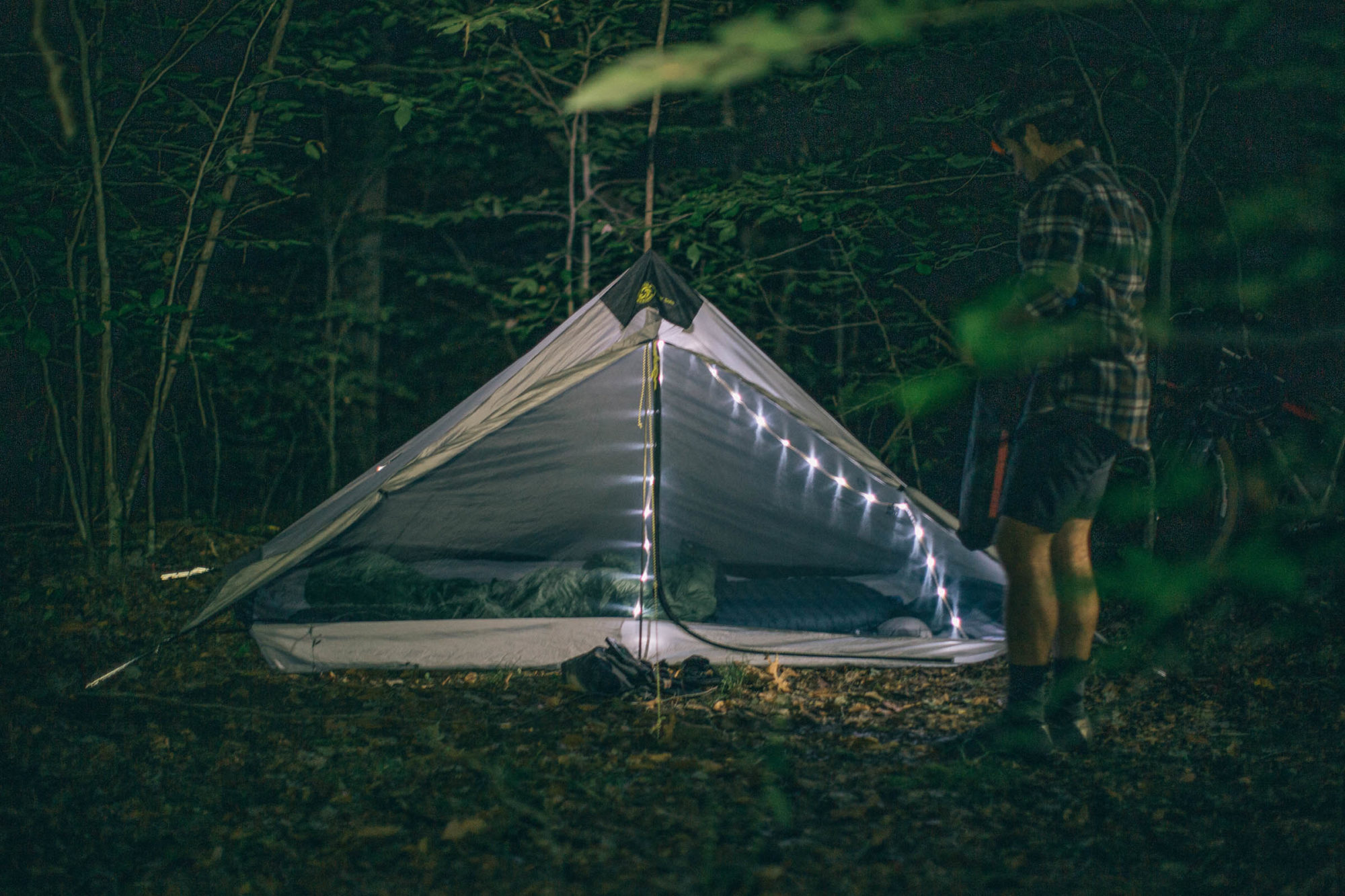
Single Wall
I suspect I’m not alone in having an ambivalent relationship to single wall tents. I’ve tried dozens of them over the years, from super cheap to the aforementioned pricey dyneema ones. Absolutely every one of them at least some of the time developed condensation overnight on the inner walls that had to be dealt with. Pretty much each of those times, at the moment of intervention, I’d think to myself, this is bullshit, why do I put up with this? A couple of years ago I was reviewing a tent that I found so poorly designed in terms of handling condensation that we cut short the review period and instead wrote a lengthy feedback letter to the manufacturer. The Lunar Solo doesn’t achieve any miraculous immunity here. The options are usually living with it, wiping it from within with a sponge, or gingerly shaking the walls so that the moisture runs down to the bottom mesh.
I get it, the strategy one is supposed to have with regard to a single-wall tent is that condensation should be headed off before it ever accumulates. This can have to do with big picture considerations like whether you’re camping in humid environments and precisely where you decide to pitch, to more micro habits, like whether you’ve taken a lot of wet gear inside. The main defense is that well-designed tents provide for substantial ventilation.
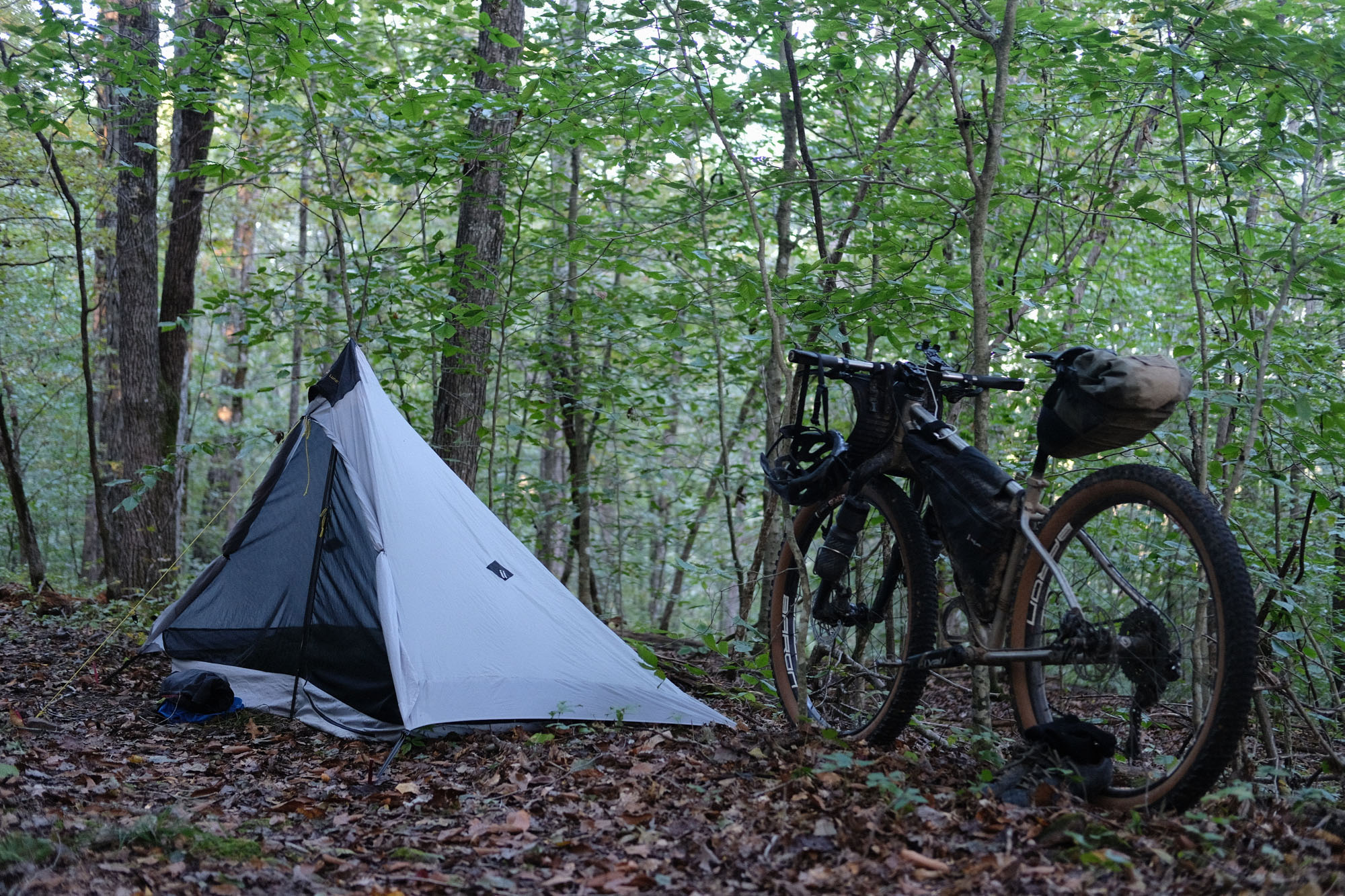
The Lunar Solo tries to meet condensation with its full front wall netting exchanging air with the netting along the perimeter. If the two halves of the awning are fully rolled aside, there is loads of circulation and the tent performs wonderfully. In my experience, however, pulling down even half of the awning—let alone closing up the vestibule entirely—threatens collecting moisture on the inside of the tent. Obviously, it’s less of an issue in drier places like the western USA or Italy in summer. Then again, those are times when I’d likely not put up a tent at all.
So, yes, it absolutely does develop condensation and certainly enough so that I often had to take measures to address it. It can’t quite be ignored because the slope of the walls means that the moisture is likely to make contact with your down bag at the toe box and near the head as you move around. Again, why deal with it? I keep going back to single-wall tents because of their very raison d’être, namely compactness and low weight plotted against living space. The Lunar Solo handles condensation about as well as I’ve experienced in a single-wall tent. I’ve certainly provoked it on this front. Nine days straight of rain in Bosnia where the tent could never dry out would overwhelm any single-wall design.
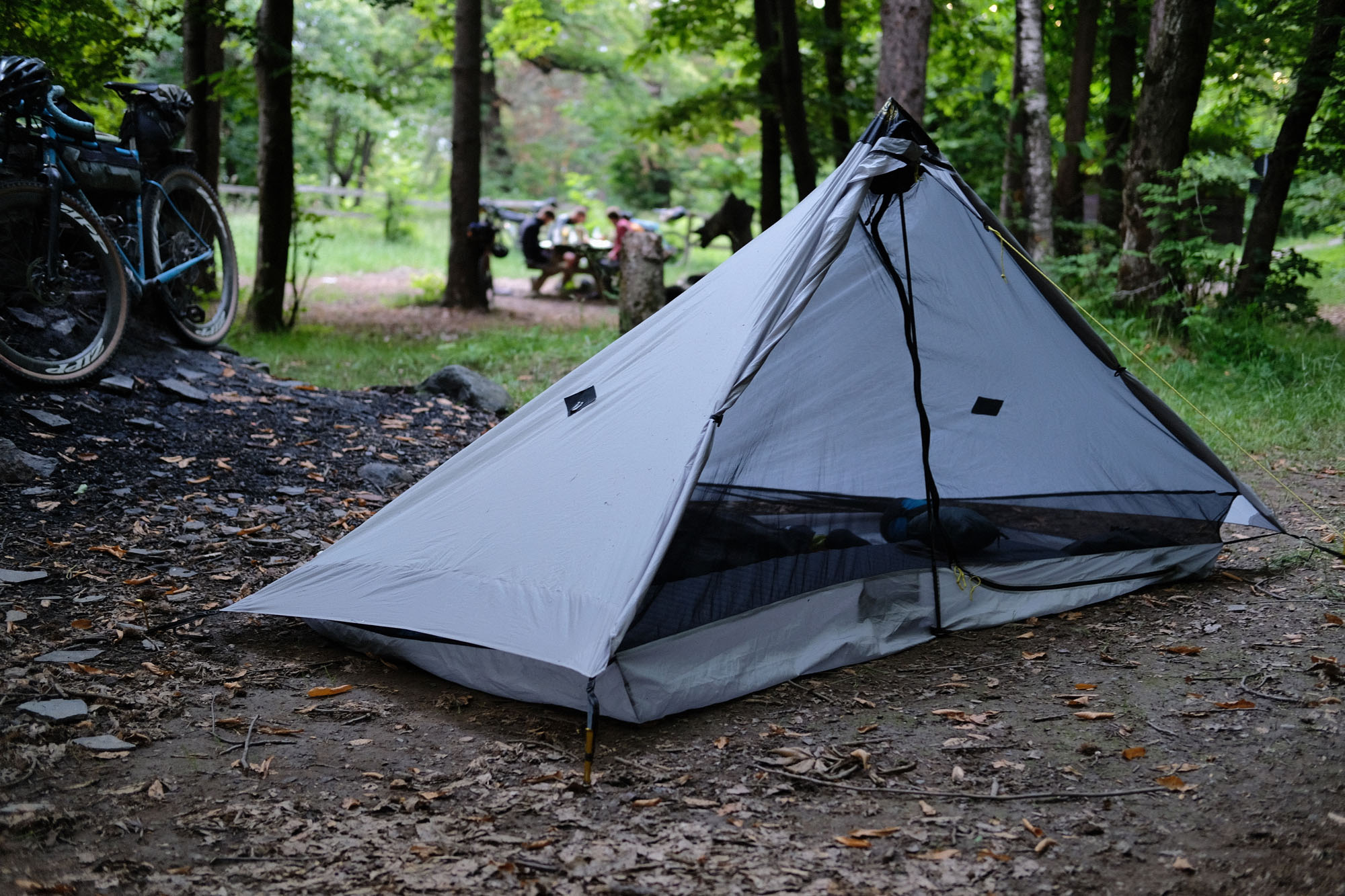
Pitch
Though I’ve spent a lot of time with it, getting a good pitch out of the Lunar Solo isn’t easy. Sure, it’s a cinch to stake down a couple of corners, fit the center pole, and then stake down the rest. But achieving the delicate balance of tension and slack between the initial stake points and the guylined pole can be frustrating.
Six Moon has detailed advice on their website under the set up tab on which order to place the stakes in and when to insert the pole. I’ve followed their advice carefully, and I’ve also tried almost every other imaginable combination of staking and poling. Theirs is a good default—one would hope so—but I can attest that on uneven ground with dodgy staking opportunities, practicing other approaches will pay dividends. The wrinkle is getting those back and side strips of mesh to stand open and clear for ventilation. You can see in the photo on the river bank in Arkansas that I emphatically didn’t get it right so the walls of the tent came right down to the gravel. In all I’d say that this is a finicky tent to master, and even once you think you’ve gotten it there will be times when you’re scratching your head and walking the perimeter of the tent changing tension and moving stakes.
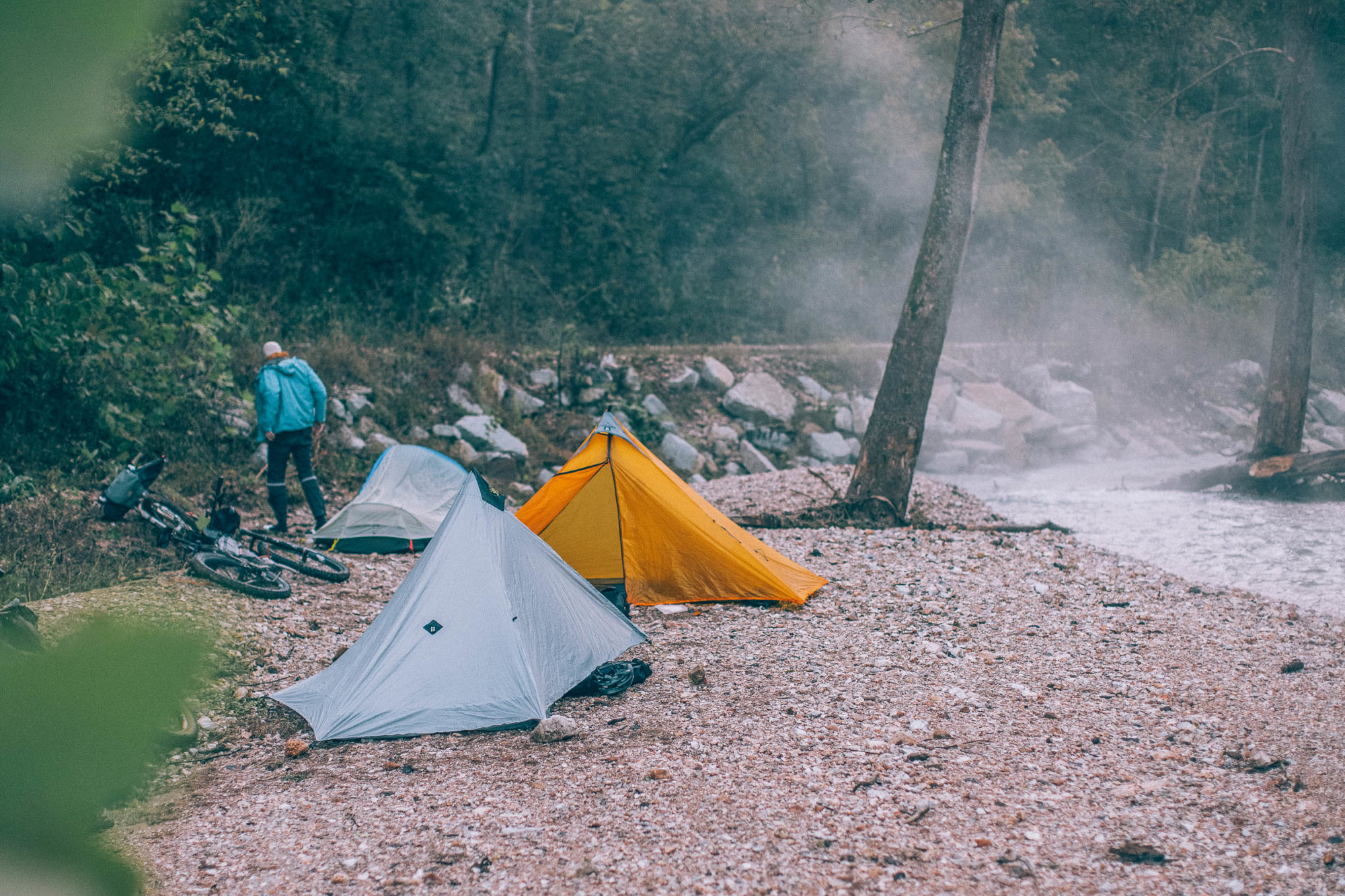
There is a strong temptation to radically angle the bottom of the pole outward to stretch the floor smooth and produce the largest possible living space. Six Moons recommend that you not do this, and instead aim for merely a slight angle. This serves two purposes. First, it leaves the floor “floating” so that it can gather and move a bit to conform to the ground and resist abrasion. Second, and more importantly, it lifts the edges of the tent body off the ground enough to expose the mesh between the floor and the walls. This is the key to getting the best ventilation possible, and therefore minimizing moisture.
Finally, the overall footprint of the tent is quite large, especially if you’ve gotten used to only needing the slightest sliver of flat ground to pitch your Big Agnes 1p tent. Put all that into your calculation as to whether it’s for you.
Pros
- Spacious and functional interior
- Compact when packed
- Reasonably light
- Single pole with short segments
Cons
- Condensation build up typical of single-wall tent
- Non-freestanding
- Fiddly setup
- Manufacturer’s Details: Six Moon Designs
- Weight: 26oz./740g (body); 1.8oz./51g (pole); 2.5oz./71g (stake set)
- Place of Manufacture: China
- Base Price: US$230
- Options: $35 carbon pole; $13 stake set; US$30 seam sealing service
Six Moon Designs sent us the Lunar Solo for review. The author is 5’8” and hates stuff dangling off of his bikepacking bags.
Wrap Up
I really do like the Lunar Solo. I’ve slept in it during extended trips in the Balkans, in Western Europe, and Colombia. It’s seen numerous nights in different parts of the USA. It sheds wind reasonably well and it’s certainly weather-tight. It offers very comfortable living space for one person plus all gear, it has a great and usable vestibule, it packs super compactly, and it doesn’t weigh much at all. Entry and exit is comfortable and straightforward. With only one carbon pole and six stakes, it fits into the typical bikepacking bag load distribution better than anything short of a tarp. Moreover, although hardly anything in the small company outdoor product space can be described as inexpensive, the Lunar Solo—owing perhaps to its current manufacture in China—is much more in reach than its most obvious competitors. It’s proven itself durable and dependable. There are notable downsides to it, however. It isn’t freestanding, so your ground will need to accommodate staking. It’s not that easy to master a good pitch. And it will accumulate condensation in the interior, sometimes a great deal.
Please keep the conversation civil, constructive, and inclusive, or your comment will be removed.






